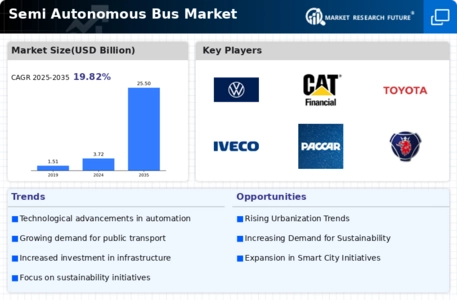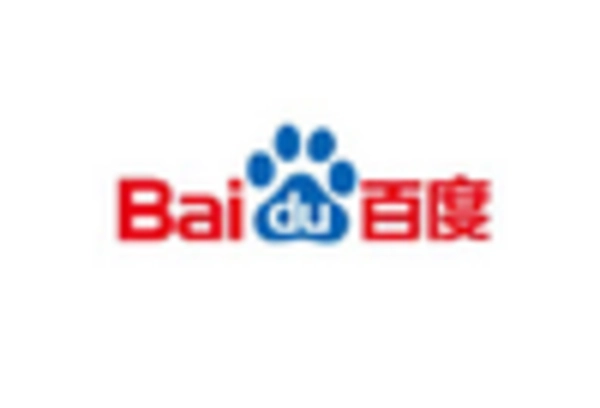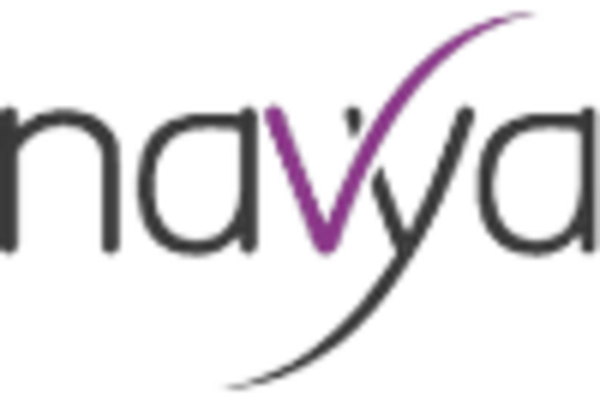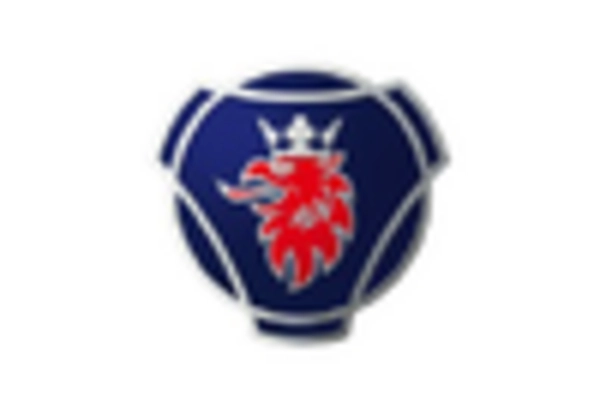The Semi Autonomous Bus Market is currently characterized by a dynamic competitive landscape, driven by technological advancements and increasing demand for sustainable public transportation solutions. Key players such as Navya (FR), Proterra (US), and Baidu (CN) are strategically positioning themselves through innovation and partnerships, thereby shaping the market's trajectory. Navya, for instance, focuses on developing fully autonomous vehicles, while Proterra emphasizes electric bus technology, indicating a trend towards electrification and automation in public transport. Baidu, leveraging its AI capabilities, aims to enhance the operational efficiency of semi-autonomous systems, suggesting a collective shift towards integrating advanced technologies in transportation.
In terms of business tactics, companies are increasingly localizing manufacturing to reduce costs and enhance supply chain resilience. The market appears moderately fragmented, with several players vying for market share, yet the influence of major companies is palpable. This competitive structure fosters innovation, as firms strive to differentiate themselves through unique offerings and technological advancements.
In August 2025, Proterra (US) announced a partnership with a major urban transit authority to deploy its latest electric semi-autonomous buses in a pilot program. This strategic move not only underscores Proterra's commitment to sustainable transport solutions but also positions the company as a leader in the integration of electric and autonomous technologies in urban settings. The pilot program is expected to provide valuable data on operational efficiency and user acceptance, potentially influencing future deployments.
In September 2025, Navya (FR) unveiled its latest model of autonomous shuttles, which incorporates advanced AI algorithms for improved navigation and safety. This development is significant as it reflects Navya's ongoing commitment to innovation and its response to increasing competition in the autonomous vehicle sector. The enhanced features are likely to attract new clients, particularly in urban environments seeking to modernize their public transport systems.
In October 2025, Baidu (CN) launched a new initiative aimed at integrating its autonomous driving technology with existing public transport networks. This initiative is pivotal as it not only enhances the operational capabilities of semi-autonomous buses but also positions Baidu as a key player in the digital transformation of public transport. By facilitating seamless integration, Baidu may significantly influence the future landscape of urban mobility.
As of October 2025, current trends in the Semi Autonomous Bus Market indicate a strong focus on digitalization, sustainability, and AI integration. Strategic alliances among key players are increasingly shaping the competitive landscape, fostering innovation and collaboration. Looking ahead, it appears that competitive differentiation will evolve from traditional price-based strategies to a focus on technological innovation, reliability in supply chains, and the ability to adapt to changing consumer preferences. This shift suggests that companies prioritizing R&D and strategic partnerships will likely emerge as leaders in the market.

















Leave a Comment